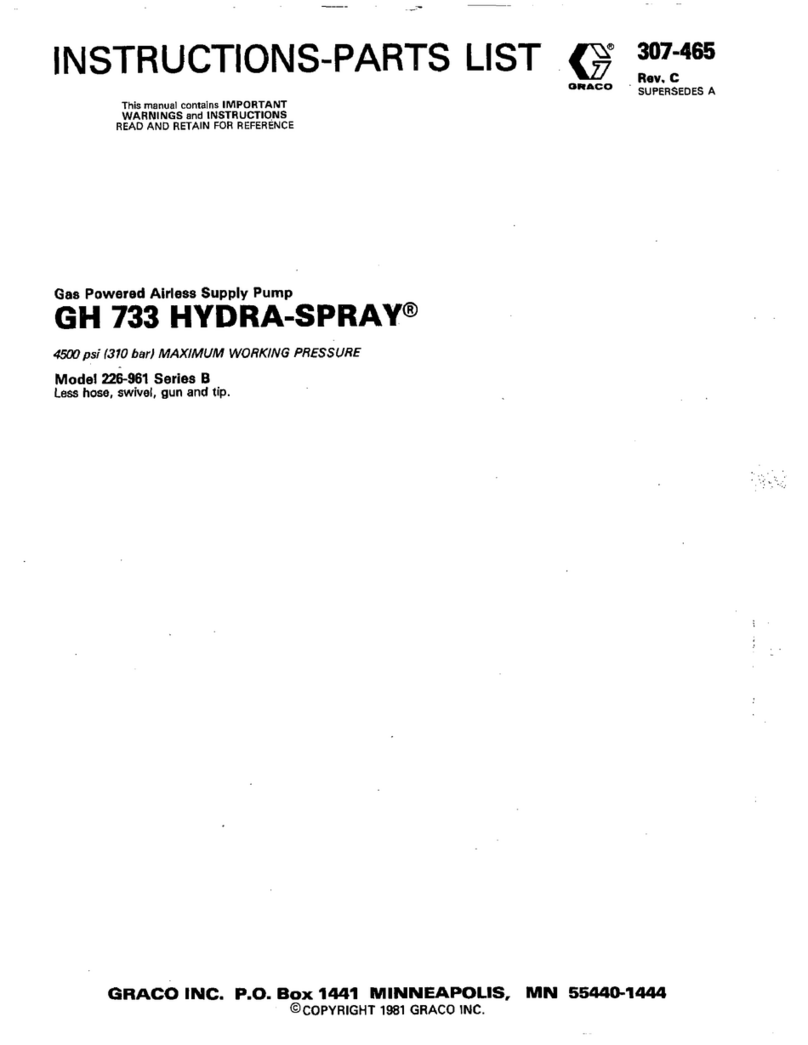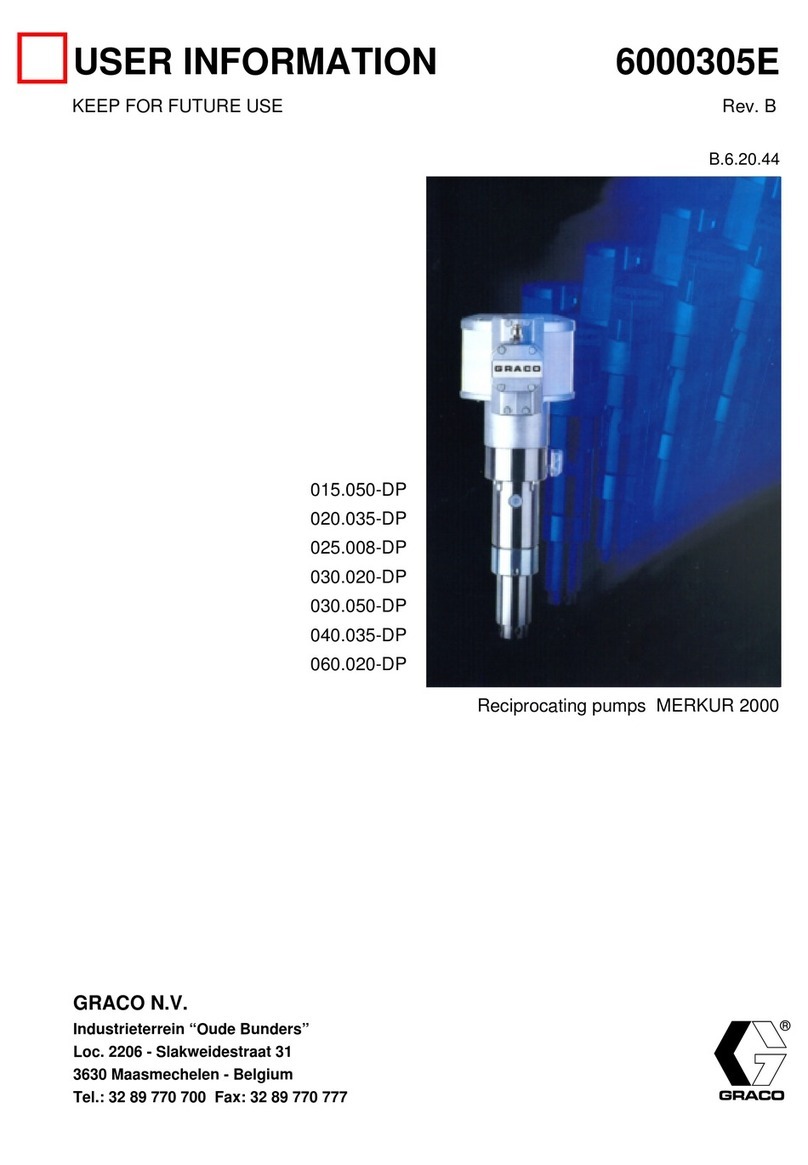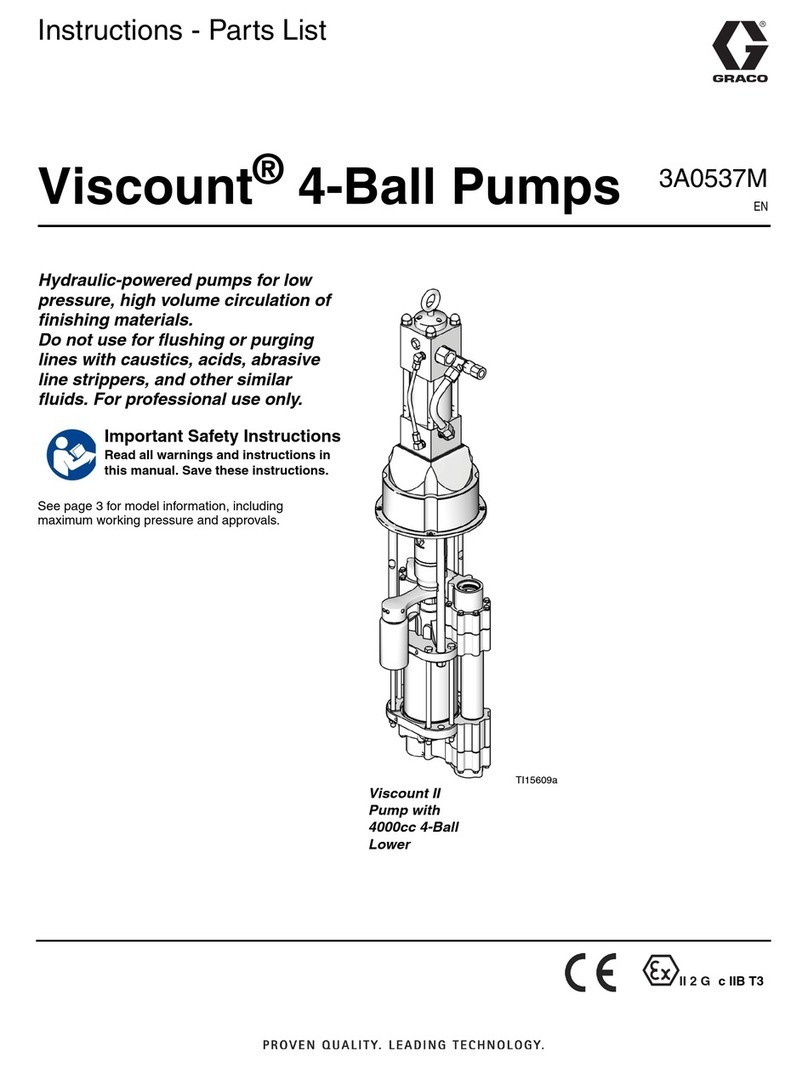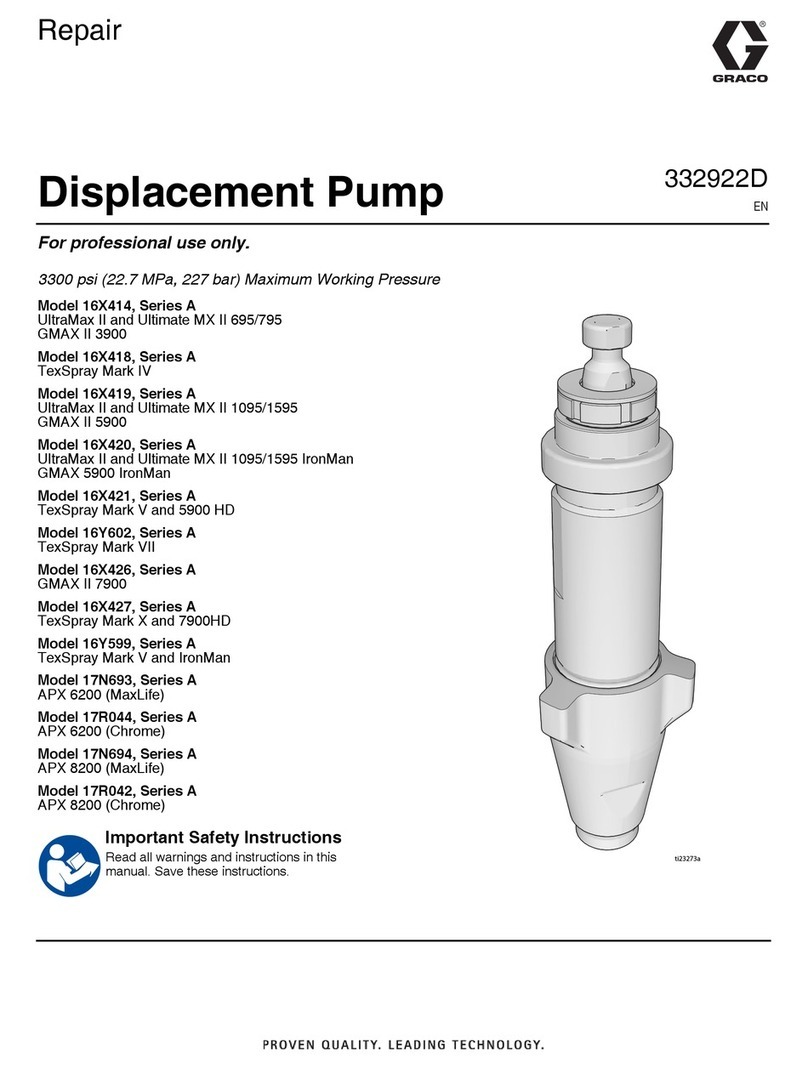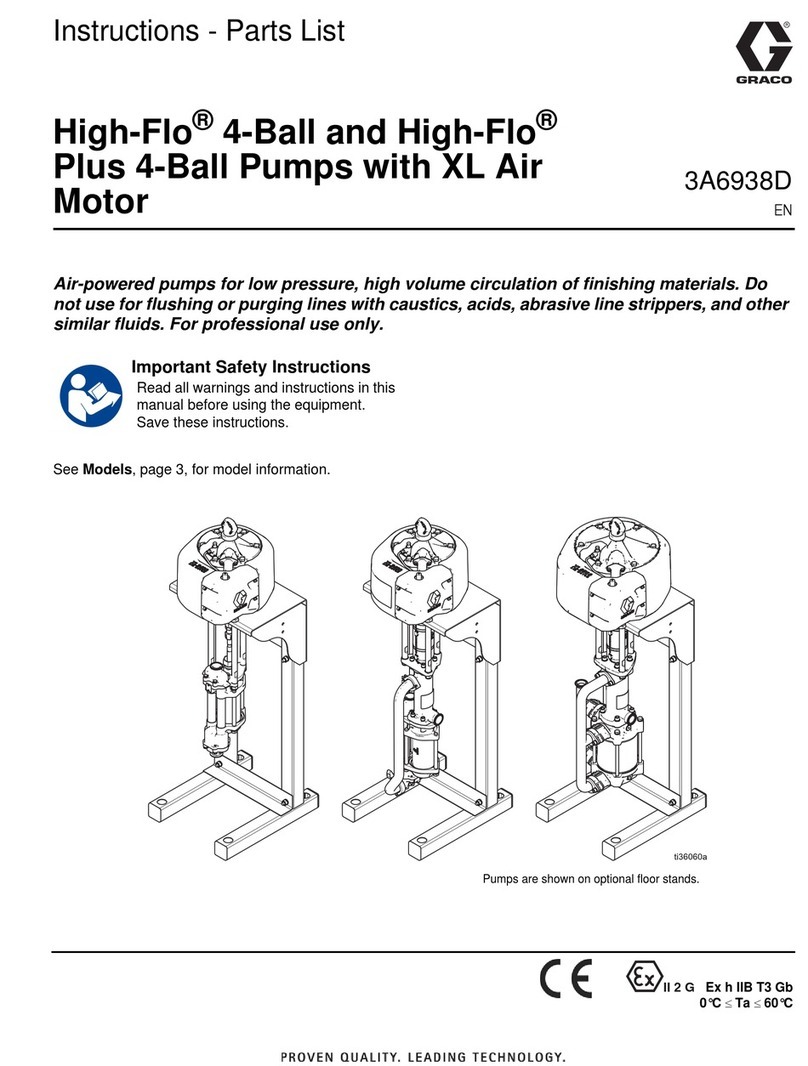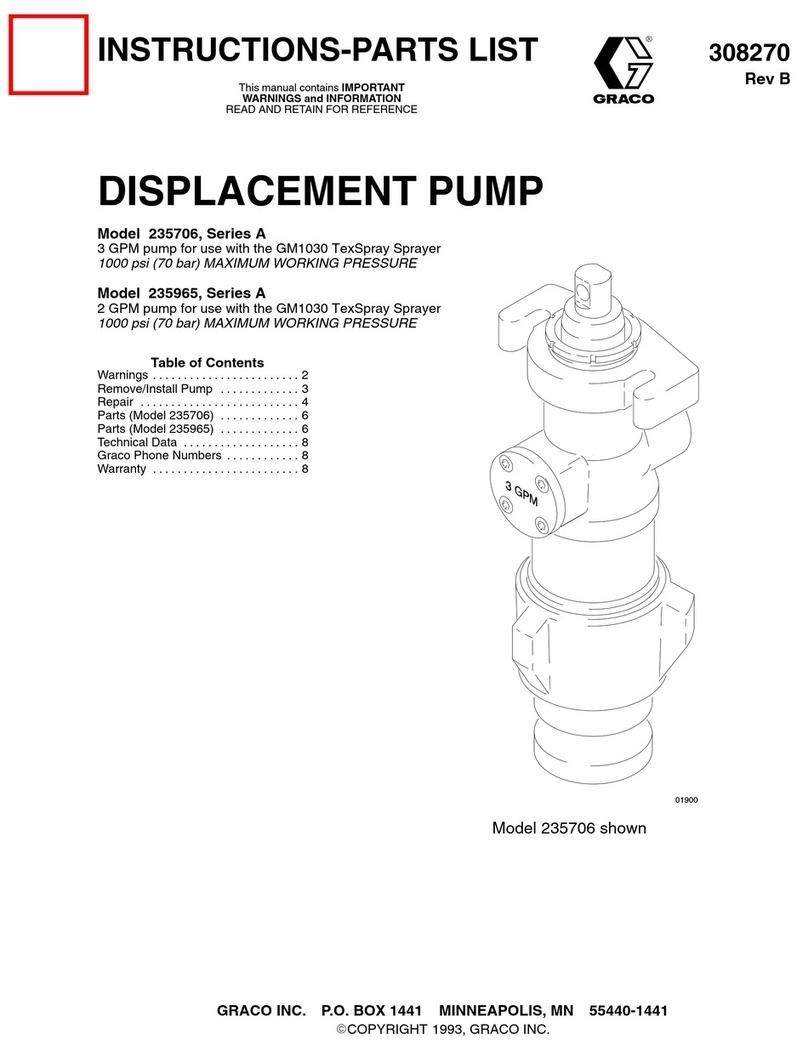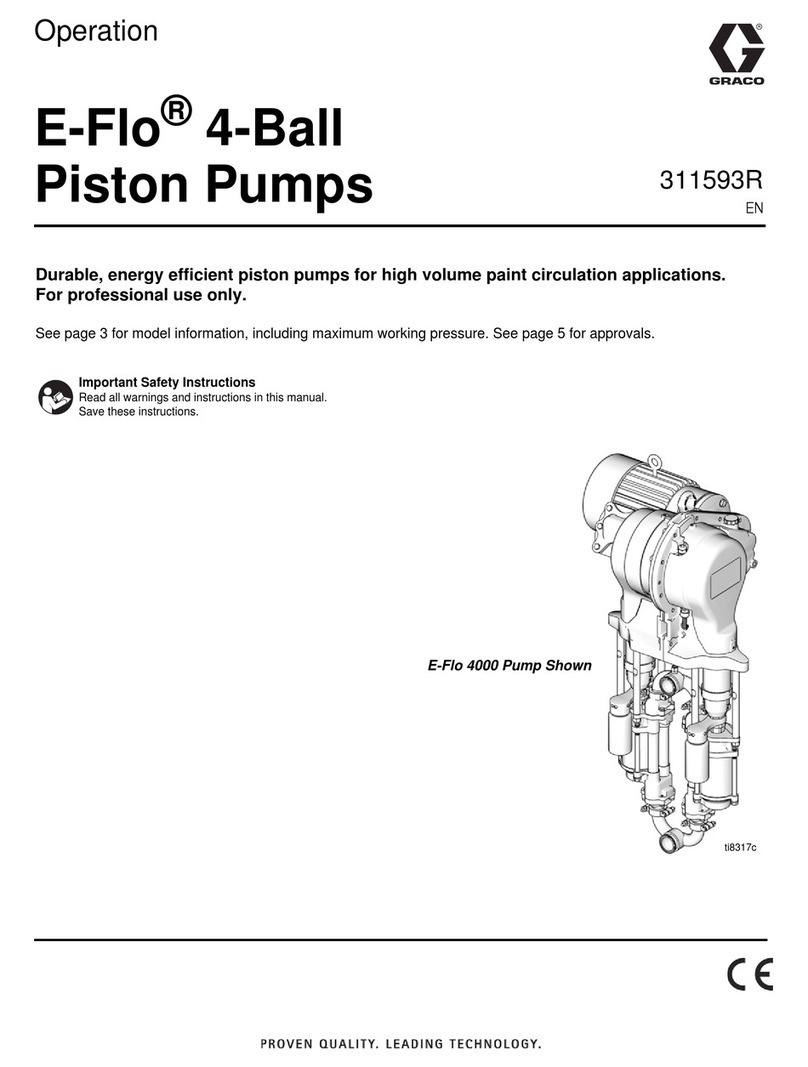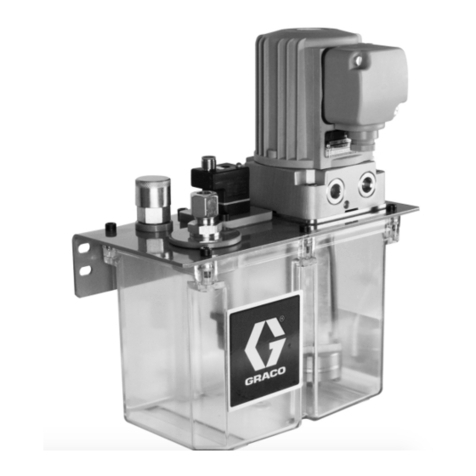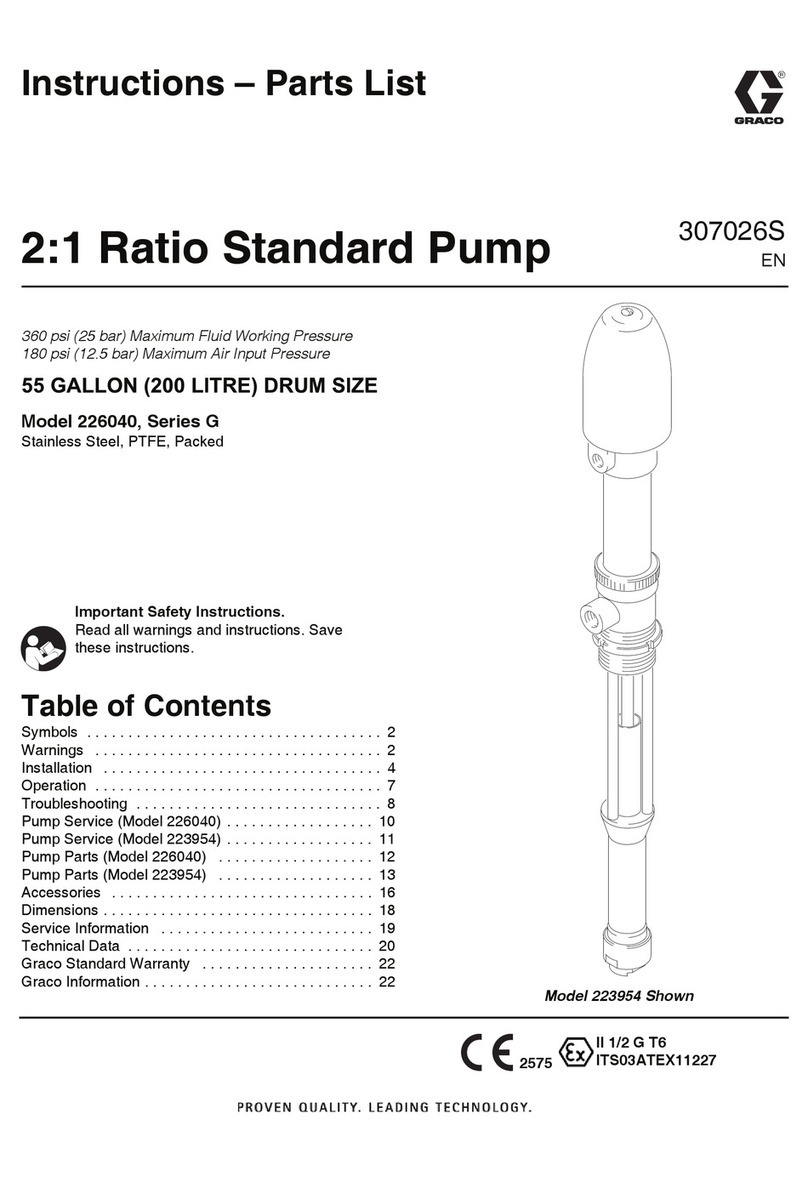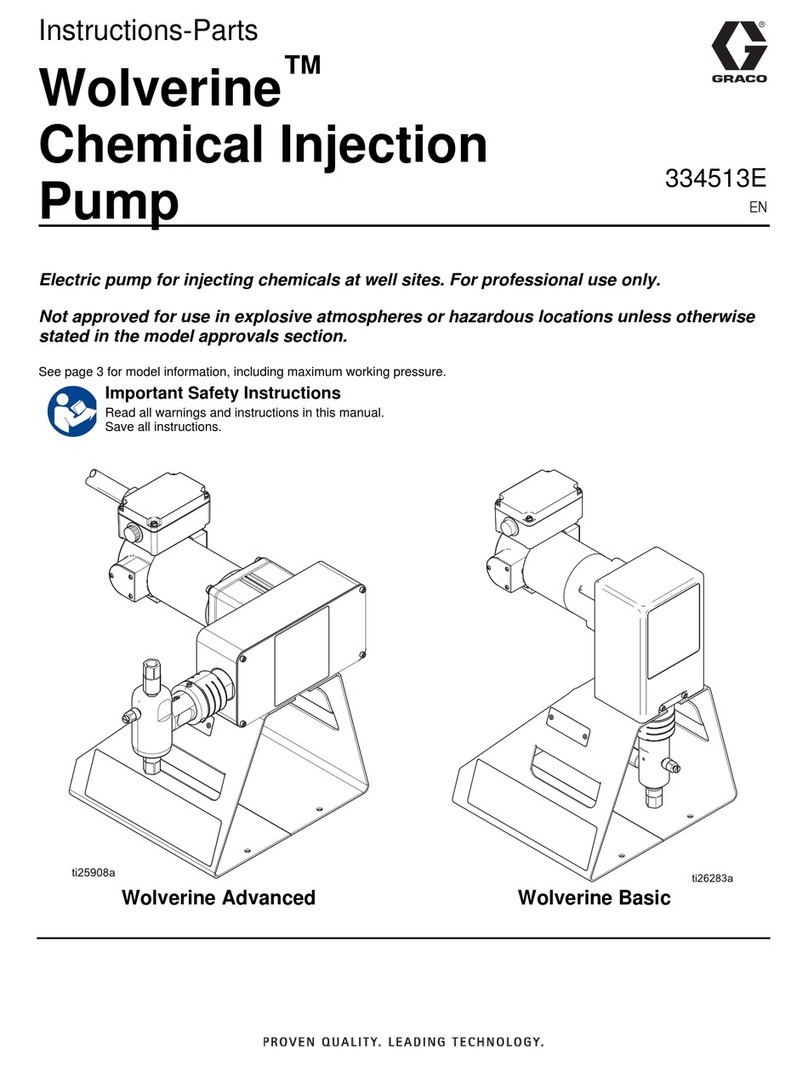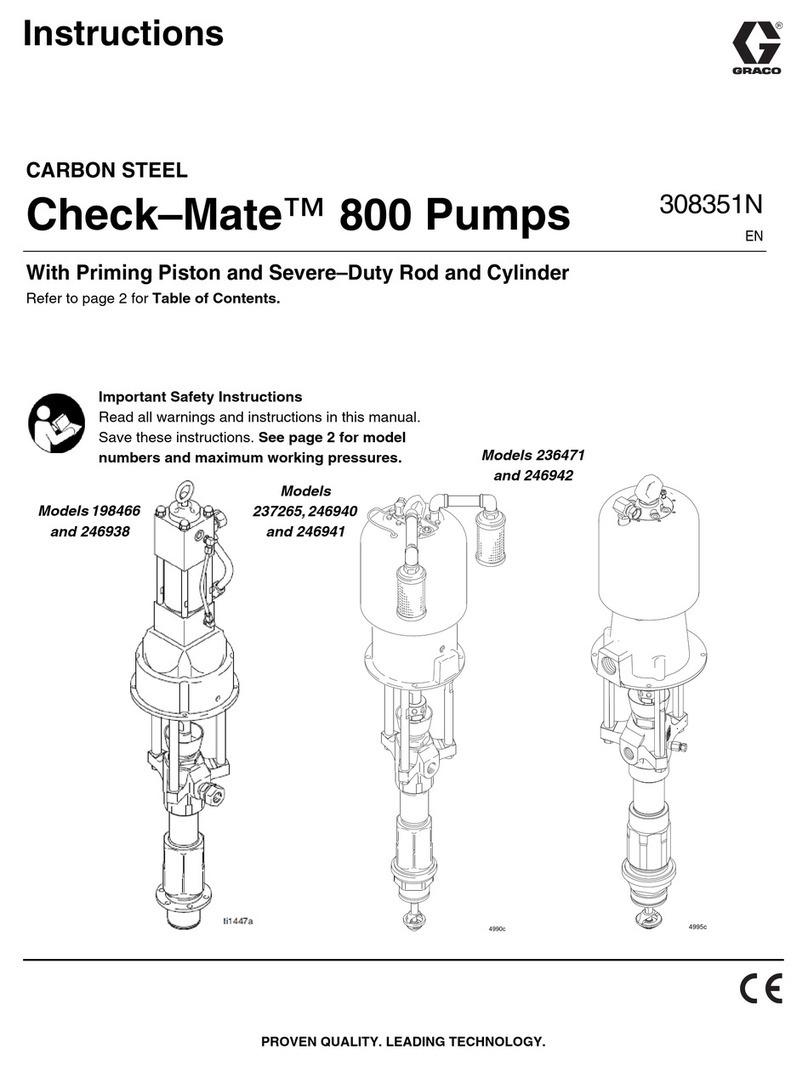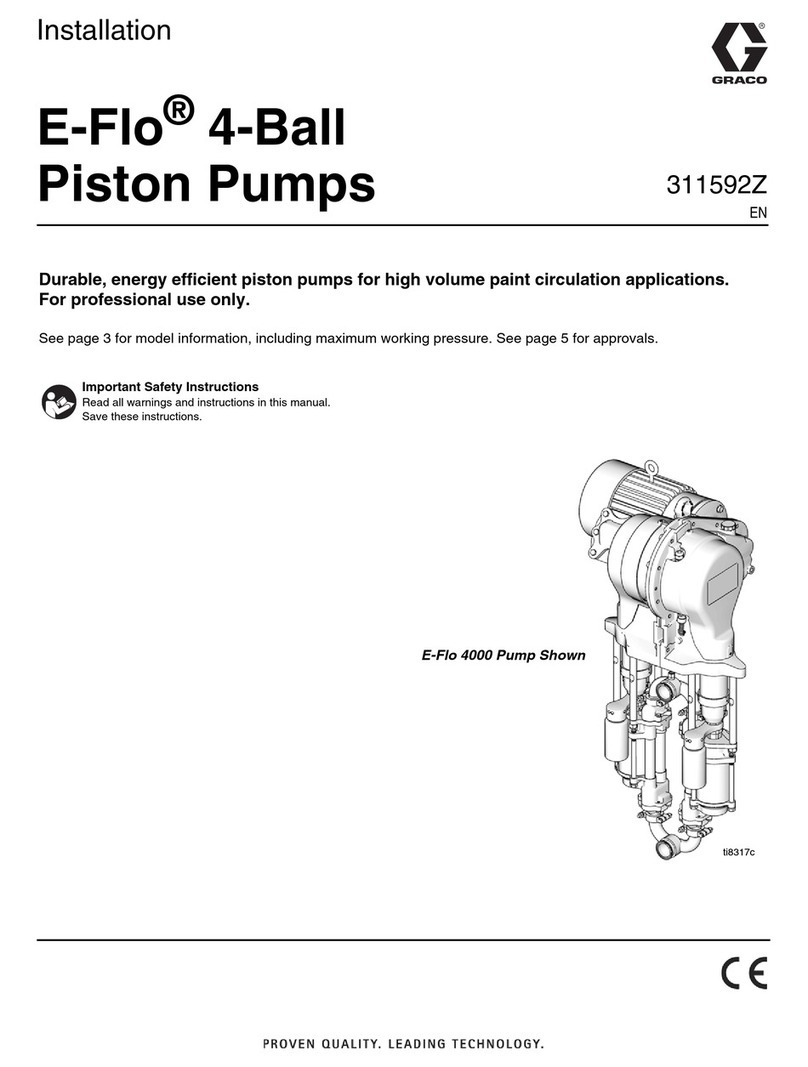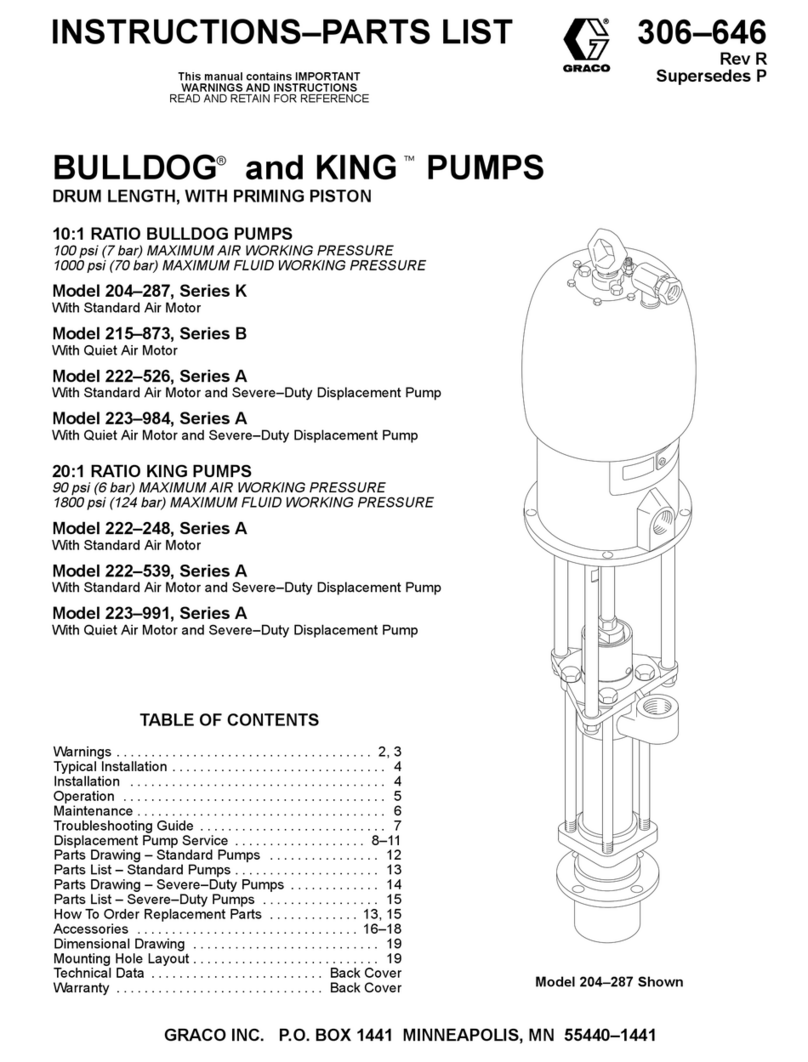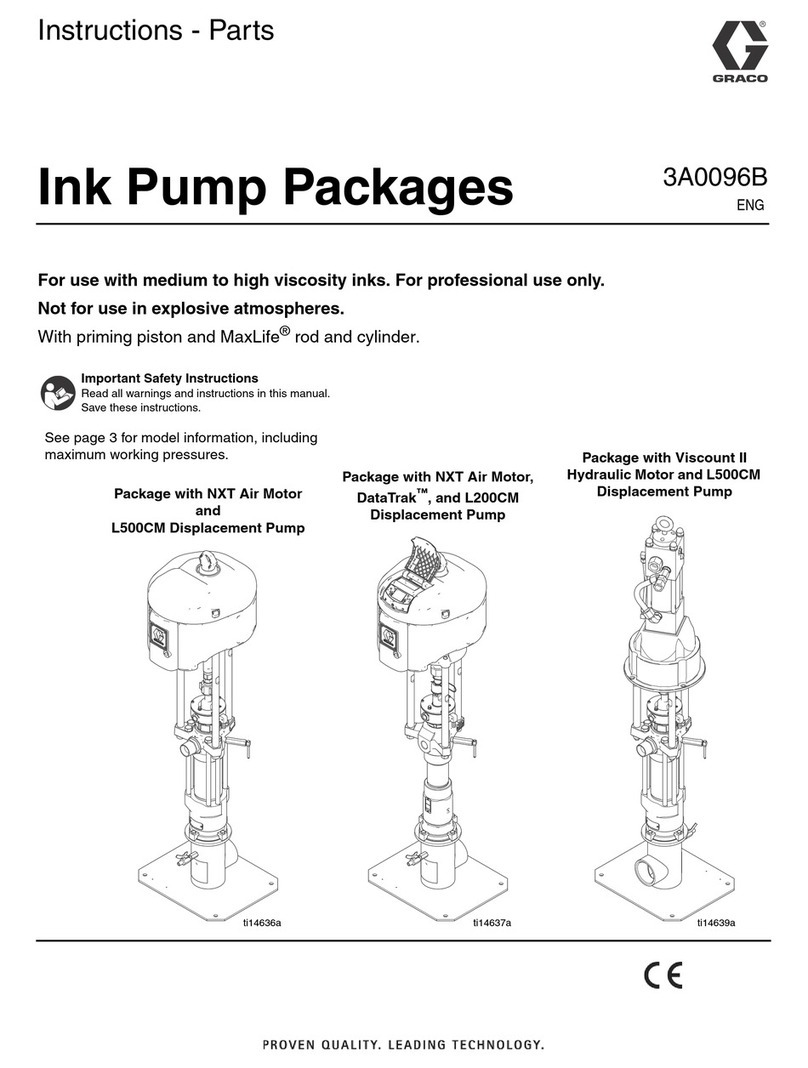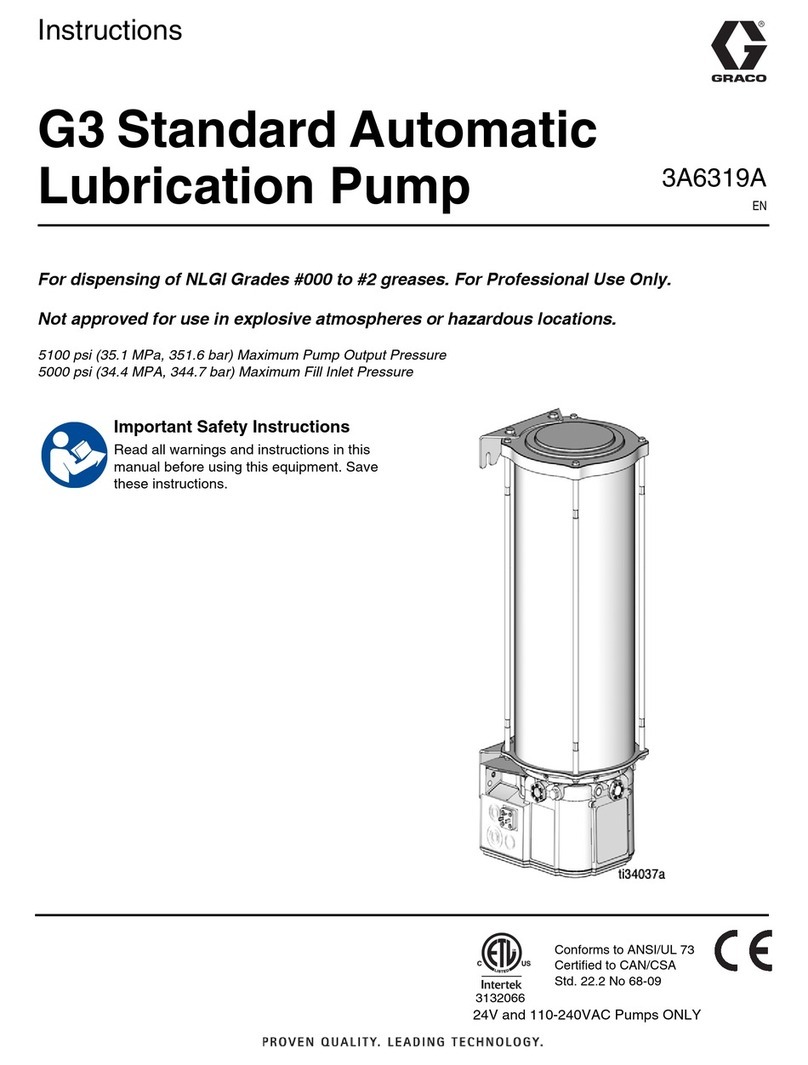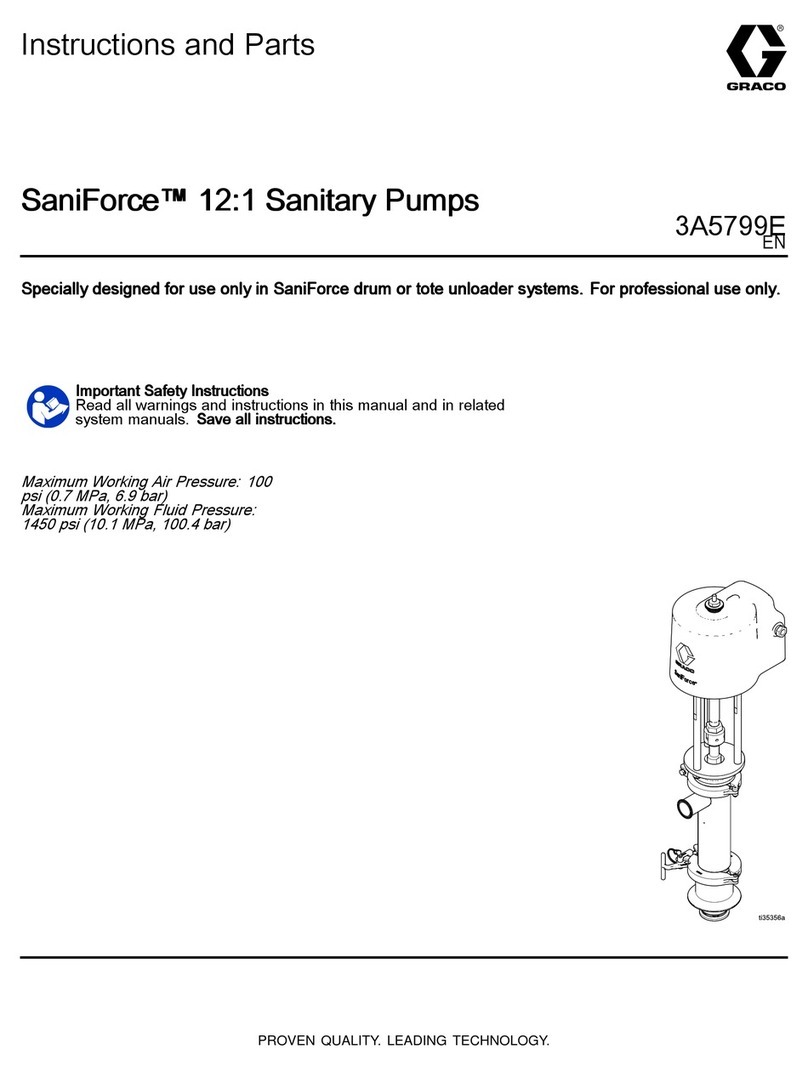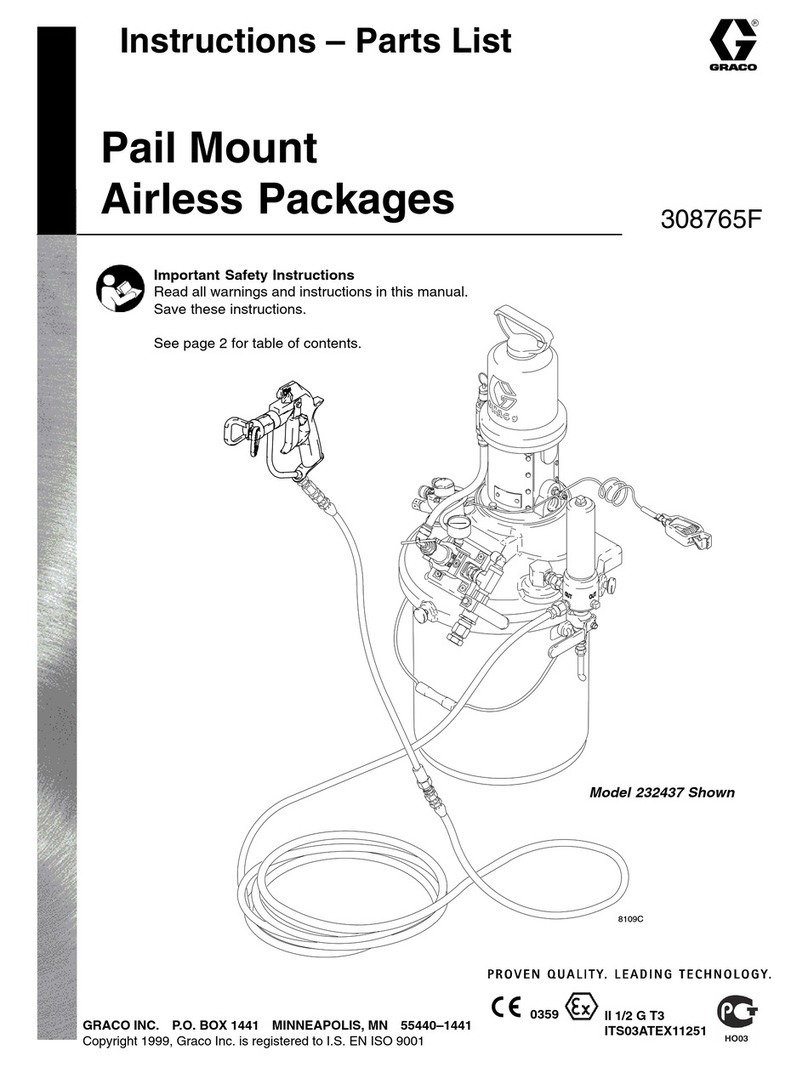
FOR
PROFESSIONAL USE ONLY.
OBSERVE
ALL
WARNINGS.
Read
and
understand
all
instruction
manuals
before
operating
equipment.
EQUIPMENT MISUSE HAZARD
General Safety
Any misuse of the equipment or accessories, such
es
over-
pressurizing, modifying parts, using incompatible chemicals
and fluids, or using worn or damaged parts, can cause them to
rupture and result in serious bodily injury, such as splashing
fluid in the eyes or on the skin, fire, explosion, or propew
damage.
NEVER alter or modify any part of this equipment; doing
so
could cause
it
to malfunction.
damaged parts immediately.
CHECK all equipment regularly and repair or replace worn or
ALWAYS read and follow the fluid and solvent
manufacturer's literature regarding the use of protective
clothing and equipment.
System Pressure
This pump can develop
16
bar
(230
psi/ MAXIMUM
WORK-
ING
PRESSURE.
at
12.4
bar
(180
psi) MAXIMUM INCOM-
cessories are rated to withstand the maximum working
ING AIR PRESSURE. Be sure that all equipment and ac-
pressure of this pump. DO NOT exceed the maximum working
pressure of any component or accessory used in the system.
Fluid
Compatibility
BE
SURE that
all
fluids and solvents used ere chemically com-
the back cover. Always read the fluid and solvent manufac-
patible with the wetted parts shown in the Technical Data on
turer's literature before using them in this pump.
Pressure Relief Procedure
To
reduce the risk of serious bodily injury, including splashing
follow
this procedure whenever you shut
off
the pump, when
in the eyes or on the skin, or injury from moving parts, always
checking or servicing any part of the system. when installing,
cleaning or changing nozzles, and whenever you stop dispens-
Ing.
1.
Shut
off
the air to the pump.
2.
Close the bleed-type master air valve (required in your
system).
3.
Hold
a
metal partof the dispensing valve firmly to the side
of
a
grounded metal pail, and actuate the valve
to
relieve
4.
Open the drain valve (required
i?
your system), having
a
pressure.
5.
Leave the drain valve open until you are ready to dispense
container ready to catch the dramage.
again.
If
you
suspect that the nozzle or hose
is
completely clogged,
or that pressure has not been
fully
relieved after following the
steps above, VERY SLOWLY loosen the hose end coupling
and relieve pressure gradually, then loosen completely. Now
clear the nozzle or hose.
FIRE
OR
EXPLOSION HAZARD
Static electricity
is
created by the flow of fluid through the
pump and hose.
If
wefy
part of the equipment is not properly
grounded, sparking may occur, end the system may become
hazardous. Sparking may also occur when plugging in or
unplugging
a
power supply cord. Sparks can ignite fumes
from solvents and the fluid being dispensed, dust particlesand
other flammable substances, and can cause fire or explosion
and serious bodily injury and propew damage.
while using this equipment, STOP SPRAYING
IM-
If you experience any static sparking or even
e
slight shock
MEDIATELY.-Check the entire system for proper grounding.
tified and corrected.
Do not use the
syam
again until the problem has been iden-
1.
Pump:
use
a
ground wire and clamp
as
instructed to the
2.
Air Compressor: according to manufacturer's recommen-
3.
Object being sprayed: according to local code.
4.
Fluid
supply container: according to local code.
5.
All
solvent pails used when flushing, according to local
code. Use only metal pails, which are conductive. Do not
place the pail on
a
non-conductive surface, such as paper
6.
To
maintain grounding continuity when flushing or re/iev-
or cardboard, which interrupts the grounding continuity.
ing
pressure, always hold
a
metal part of the valve firmly to
the side of
a
grounded metal pail, then trigger the valve.
right.
dations.
MOVING PARTS HAZARD
body parts. KEEP CLEAR of moving parts when starting or
Moving parts can pinch or amputate your fingers or other
operating the pump. Follow the Pressure Relief Procedure
above to prevent the pump from starting accidentally.
and washer
(X).
Insert one end of a
12
ga
(1.5
mm') minimum
To
ground the pump, loosen the grounding lug locknut (W)
ground wire (Y) into the slot in the lug
(ZI
and tighten the
to
a
true earth ground. Refer to ACCESSORIES on page
30
to
locknut securely. See Fig
1.
Connect the other end of the wire
order
a
ground wire and clamp.
Flushing Safety
To reduce the risk of injury from splashing or static sparking,
always hold
a
metal part of the dispensing valve firmly to the
side of
a
grounded metal pail, and use the lowest possible fluid
pressure when flushing.
IMPORTANT
United States Government safety standards have been
adopted under the Occupational Safety and Health Act. These
standards-particularly the General Standards, Part
1910,
and
the Construction Standards, Pert 1926-should be consulted.
2
,30747
